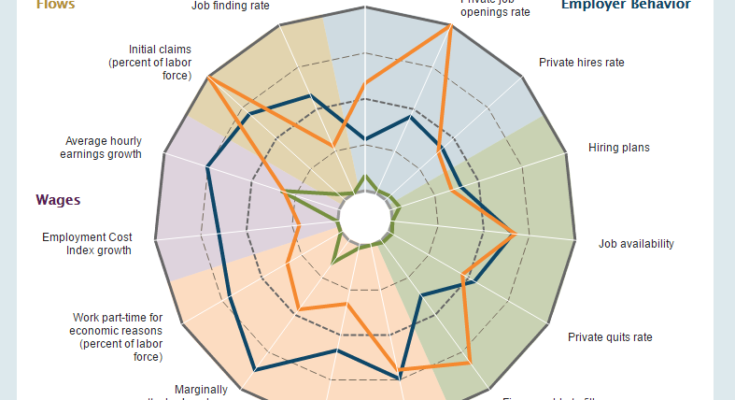Recent labor market news has understandably led the Federal Reserve and various Fed presidents to conclude the job market is strong. The latest Fed policy statement concluded, “A range of recent indicators, including strong job gains, points to additional strengthening of the labor market.†In a recent speech, Chicago President Evans observed, “Over the past two years, the unemployment rate has fallen to 5 percent, half its 2009 peak, and job growth has averaged well over 200,000 per month.†And a recent Power Point presentation used by St. Louis President Bullard contained the conclusion, “labor markets are relatively tight.â€Â Â
But less-used labor market indicators are not as rosy. The Atlanta Fed’s labor market spider chart highlights some of these numbers:

The chart places indicators on a somewhat circular table and then compares those readings to historically important levels, placing current data into historical perspective. The gold line represents readings from the current expansion while the dark blue line is data from the height of the previous expansion. After 7 years of growth, labor utilization is weak. The following chart from the St. Louis Fed provides additional detail:

While the U-6 rate of unemployment is declining, its current level is at the highest level attained in the last expansion. This chart confirms the considerable amount of slack that currently exists in the labor market.
If the economy were actually at “full employment†as the Fed argues, wages should be rising at a sharp rate. After all, full employment implies employers would raise wages to not only attract new hires but keep current employees from leaving for higher pay. But the Atlanta Fed wage tracker shows that the current Y/Y pace of wage growth is at the same level as the lowest rate of growth from the previous expansion – which was, at times, labeled a “jobless recovery.â€Â

